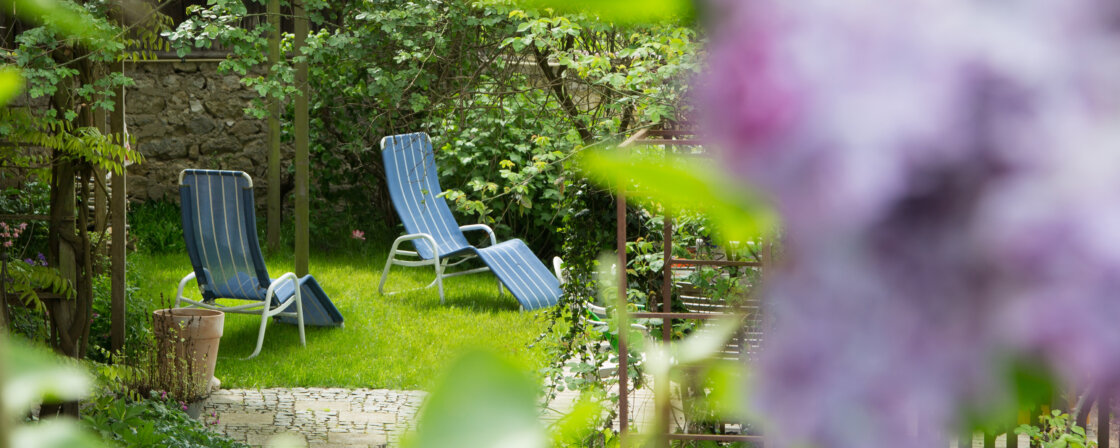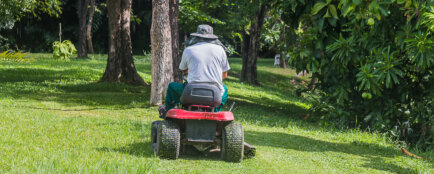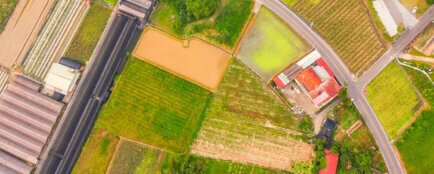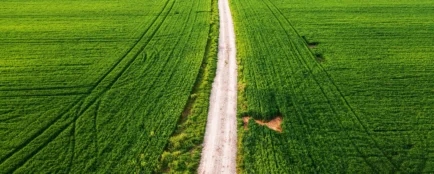Why it pays to rent land
Are you considering whether to buy or rent land? Both options have their advantages and disadvantages. But in certain cases, renting is more worthwhile. These are the main reasons why:
- Short-term commitment: if you only need land for a short period of time or are unsure about the future, renting is a safer and more flexible option. This is because a lease for land is usually signed for only a few years, with the option of earlier termination. In contrast, a mortgage loan can put a strain on your budget for up to several decades. Even if you are paying out of your own money, the eventual future sale may drag on considerably. You would then have a substantial amount tied up elsewhere for the long term.
- Financial aspect: The lease requires no initial capital, and if it does, it is only a refundable deposit of a maximum of three rents. On the other hand, if you plan to buy the land, you will need either the full purchase price or at least a mandatory participation in the mortgage. The latter is usually 10-20% of the total loan.
- Maintenance and repairs: if you are renting the land, then major repairs costing over CZK 1,000 are the landlord’s responsibility. This can protect you from having to make large investments in the land.
- Market uncertainty: The property market is erratic and investing in land now can mean a loss in the future. On the other hand, it can also mean appreciation. However, you don’t have to deal with this factor at all with renting.
- Taxes: owners of real estate, including land, are required to pay taxes on it every year. In addition, you must not forget the property tax. This is currently abolished. However, this does not mean that it cannot be reintroduced in the future. However, in the case of land rental, you do not have to deal with taxes at all. These are the responsibility of the landlord.
Rent or lease?
If you are planning to rent, for example, a garden outside the town for recreation, this will be a lease. However, if it is a garden with fruit trees and the purpose of harvesting the fruit, it could already be a lease. The difference is that in the first case the purpose is to use the land, but in the second case the land can be used (or its fruits in the form of fruit). It is therefore a good idea to clarify whether your case will actually be a lease of the land or whether it will be a tenancy. In the latter case, you are signing a different contract with different rules. In this article, we will deal only with the lease.
Lease agreement for land
A ground lease should always be in writing and contain a few basic elements. Whencompleting the lease, it is important to correctly state the parcel number of the land to ensure unambiguous identification of the property being leased.
- Identification of both parties: first of all, you need to specify both parties – i.e. the tenant and the landlord. This should include the name, date of birth, place of residence and birth or ID number.
- Identification of the land: There must also be a precise identification of the land. Thus, the parcel number of the land, cadastral area, acreage, etc. should be indicated.
- Rent: The contract must specify the amount of rent and the method of payment. In addition to the amount itself, a list of items included in the rent should be included (e.g. whether any sewerage is included in the rent or paid separately).
- Duration: the contract may or may not specify the duration of the lease. If no date is specified, it is automatically assumed that the lease is for an indefinite term. However, what should not be missing from the contract are the terms of termination, such as notice period, etc.
- Other rights and obligations: in addition to the basic elements, the contract may also include other rights and obligations for both parties, including penalties for non-compliance with the rules set out in the contract.
Are you solving a similar problem?
Are you planning on renting the land?
We will draft or review a lease agreement tailored to your case. Thanks to our services, even after the end of the lease, no disputes will arise between landlord and tenant regarding unclear rights or obligations.
I want a tailor-made rental agreement
- When you order, you know what you will get and how much it will cost.
- We handle everything online or in person at one of our 6 offices.
- We handle 8 out of 10 requests within 2 working days.
- We have specialists for every field of law.
Transfer protocol for the land
The land transfer protocol should be signed together with the contract. This document should accurately describe and preferably photographically document the condition of the land and any equipment on it that is part of the lease (e.g. garden house, swimming pool, etc.).
The handover report serves in particular to avoid disputes between the tenant and the landlord after the end of the lease, for example in the event of damage or loss of the property. The handover report is clear evidence of the condition of the land and equipment at the time of handover. The handover report should include:
- Identification details of both parties: the same as for a lease agreement.
- Identification of the property: Again, the same as in the lease agreement.
- Declaration: A statement by the landlord that he is giving the land to the tenant for use and a statement by the tenant that he accepts the land for use.
- Description of the land and its facilities: Preferably accompanied by photographic or video documentation.
- List and number of keys: If there is lockable equipment on the plot (e.g. in the form of the aforementioned garden house), then the list of keys to each piece of lockable equipment and their number should also be included in the protocol.
If you are not sure what the correct handover protocol for a plot should look like, a template of this document may be a useful guide.
Tip for article
Tip: You can find a number of templates for a land transfer protocol on the internet. However, these are often outdated or do not contain all the important components. However, if you choose our Rental Property service, you have the handover protocol included.
What to watch out for
Before signing a lease, you should find out some important information about the land :
- Zoning restrictions: check how the land is defined in the land registry and in the zoning plan. This is because if you want to carry out minor improvements on the land, for example in the form of a fence, this may not be allowed. Similarly, you cannot plant a tree or grow vegetables on some types of land.
- Rental conditions: Read the lease carefully so that you are clear about all the terms and conditions, including the duration of the lease, rent payments and any penalties.
- Access to the property: Unless you are an off-road vehicle owner, it’s definitely not the best idea to choose a lot several miles from a paved road (unless you are a big fan of walking). This also comes with potential easements. These can greatly affect how you can use the land. For example, if you rent a garden for relaxation purposes, but later discover that there is a path leading through it to ten other neighbouring gardens, it certainly won’t help you relax.
- Future development plans: find out what the council’s future building plans are. It could be that in a few months’ time a motorway will be built next to the land you have rented.
- Natural hazards: If you plan to rent land next to a river, be sure to find out about flooding in the area. This doesn’t just apply to land situated by a river, as water problems can occur in unexpected places.
- Neighbourly relations: last but not least, it pays to do your research on your potential neighbours. A neighbour who likes to play loud music can spoil your relaxation in your newly rented garden.
Summary
Renting a plot is a flexible and affordable option for those who don’t want to invest in buying land but need it for short-term use. The advantage of renting is the lower initial capital and the lack of tax liabilities that would come with the purchase. When leasing land, a proper lease agreement is key and should include identification of the land, the rent and the term of the lease. This should be accompanied by a land handover report, a template of which can help clarify the condition of the land and its amenities on handover. Before signing the agreement, it is important to ascertain zoning restrictions, lease terms and access to the land.
Tip for article
Mortgage or rent? Which financing method to choose? The answer can be found in the next article.




